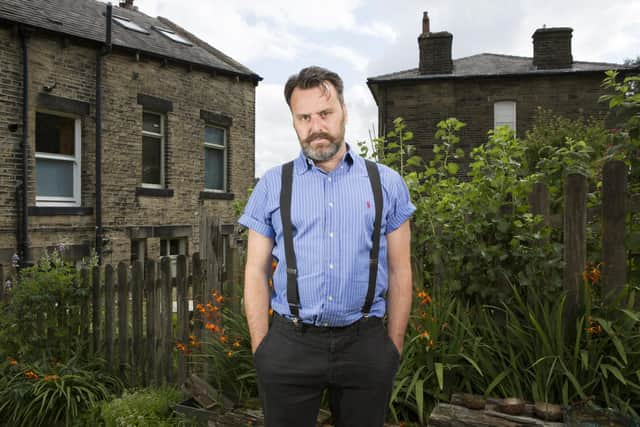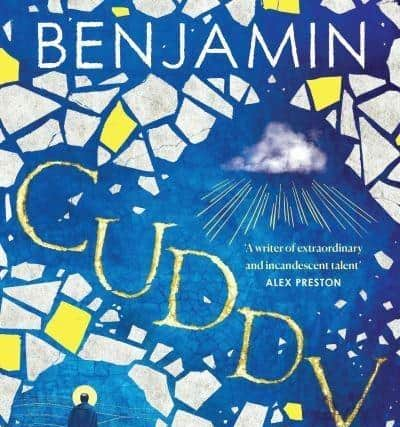Book review: Cuddy, by Benjamin Myers
I live on the St Cuthbert’s Way, and the church here has a pilgrimage each year to Lindisfarne. When I mentioned I was reading a novel about St Cuthbert called “Cuddy”, one person said a strange rhyme: “Matthew, Mark, Luke and John, haud the cuddy while I get on”. The mixture of the liturgically reverential and the bawdily iconoclastic seems perfectly in keeping with this new work by Benjamin Myers. Books are often described as “bold”, and it is usually held in punctuation mark pincers, to mean “but I didn’t like it”. I think Cuddy is bold, and I won’t crop it with double inverted commas. It is a very accomplished and very moving novel.
Cuddy is empathically not a biography of St Cuthbert: he is already dead on the opening pages. It is a book of afterlives and influences and the meanings of lives. The opening section is a kind of metronome of styles. Parts in written in free verse that seems in part inspired by Early English poetry; partly by modernist fragmentation (sometimes typographically) – “in this colourful caravan of committed Cuddy acolytes / this coffin-carrying cult, forever on the flit, / forever making camp and breaking camp” gives a sense of the alliterative, internal rhyming form Myers has adopted for this. These are interspersed with copious quotes from secondary sources about Cuthbert, and though this might sound dreary or even cumbersome, they are elegantly assembled.
Advertisement
Hide AdThrough these quotations it is made clear there is not one single, definitive story about Cuthbert. It is narrated by Ediva, a young woman who is assisting the young monks who are taking care of Cuthbert’s remains, with interventions from Cuthbert. She has a vision of where the body ought to be buried, and the cathedral that will one day enshroud it. It moves on to a section about a woman with a boorish husband who falls in love with one of the masons working on the incipient cathedral, and then a dramatic interlude about the use of the cathedral as a prisoner-of-war camp during the 17th century’s War of Three Kingdoms.


The story then jerks forward to a 19th century academic, an avowed atheist, who is asked to come to see the disinterment of Cuthbert (who famously was uncorrupted in the grave, according to legend). This section is roughly in the style of MR James, and it is not a bad pastiche. The narrator is haughty, dismissive and vain (I rather liked the pomposity of his bragging about his academic and geographic achievements). It seems as if, as Faulkner said, the past is not over, it’s not even past yet, as spectral chimes from previous chapters intrude upon the present.
Finally we reach the near-contemporary, and a young man, who cares for his mother, working on the cathedral. I think the phrase “cares for” is paramount in this novel, in terms of both looking after and yearning. I will not mince my words: this section made me cry. It is a beautiful summation to the novel.
It is not a book wholly without problems. The section with the Scottish prisoners might have benefited from a greater awareness of Scots, as parts seemed off-key, at least to my ear. The 19th century section is maybe a little too arch. But in such a panoramic book, these are venial rather than mortal sins. Moreover, the manner in which names and phrases echo over the different periods is handled skilfully. For example, in the 19th century section, the maid is called Edith (like Ediva, if one knows a smattering of Anglo-Saxon) and the student working in the cathedral café in the present is Evie.
With such a chorus of characters and their differing iterations, what binds this together? Firstly, the cathedral itself, which is even given a voice in the dramatic interlude. As a Borderer, like Cuthbert, I feel far more affinity with Northumbria than other parts of Scotland. The cathedral is a wonder, and even though I am more accustomed to white-washed walls in churches, it never fails to give a nudge of the sublime. In its elegance and grotesquery, its shimmering and its solidity, Myers captures it accurately. Indeed, that could be a description of his book.


Secondly, there is illness; whether plague, cancer, war veterans with PTSD and alcoholism, mental breakdown. Is it, I wonder, to an extent a lockdown novel?
Advertisement
Hide AdFinally across the narratives certain moral themes are examined, such as self-sacrifice, generosity, humility, patience and perseverance. None of these are presented in a preachy manner, and the novel is all the stronger for that. One thing did strike me as a curious omission. Cuthbert’s coffin purportedly contained the “Cuthbert Gospel”. This book – formerly British Library Loan 74 and then bought for £9 million to become BL Add MS 89000 – is the oldest bound and stitched book in Europe. Despite its analysis of virtues, it seems the Gospel is not at its heart. You may take that as a metaphor if you wish.
I am not a betting man, but if there are prizes ahead, I would suggest the Goldsmiths Prize for innovative fiction might be the best tip. It might be slightly old fashioned in its experimentalism, but that is wholly in keeping with its integrity.
Cuddy, by Benjamin Myers, Bloomsbury, £20